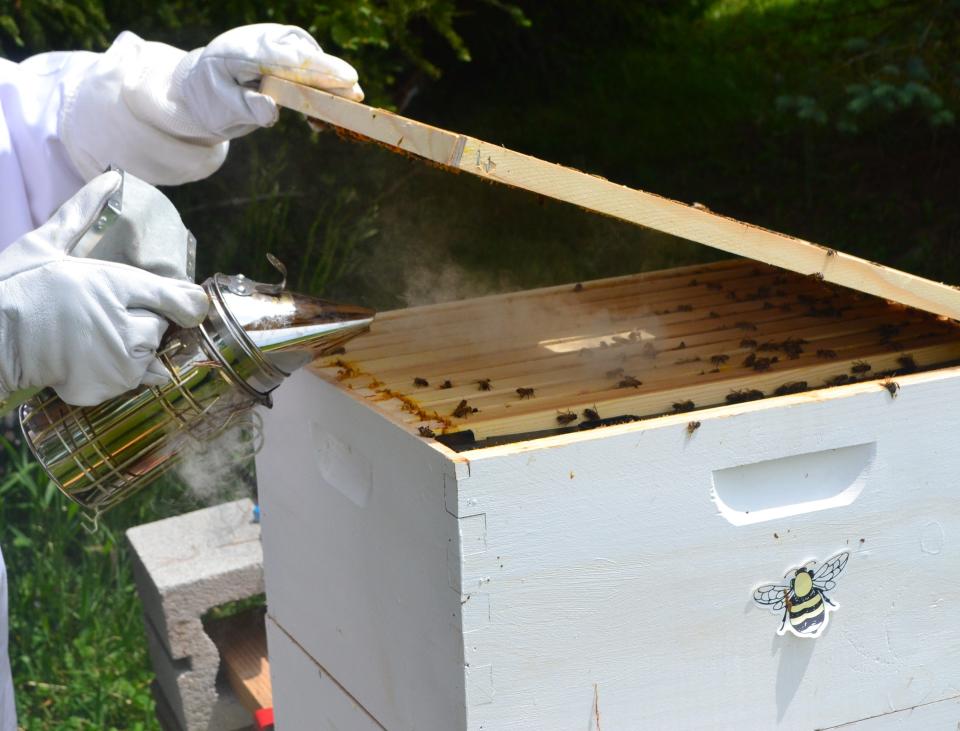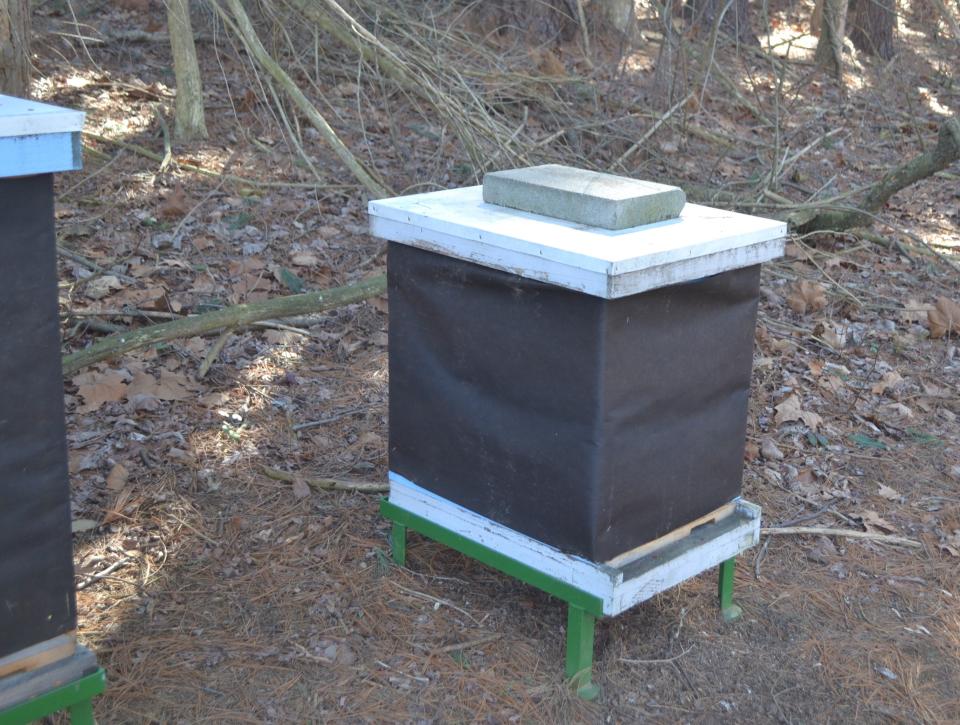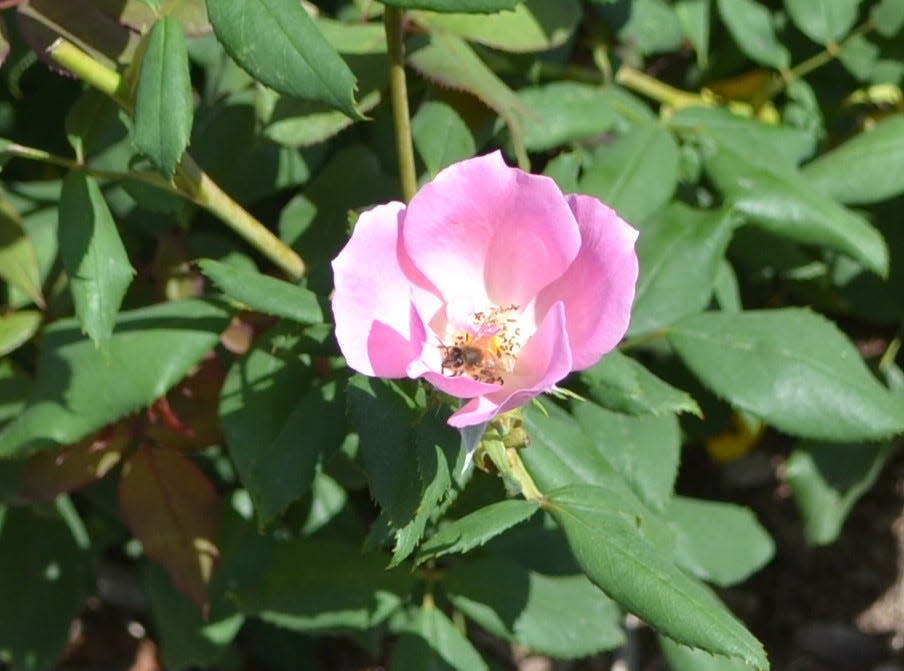A Stroll Through the Garden: An exciting afternoon with a beekeeper
Last week I had a very interesting afternoon. One of my neighbors had given me a call and said she was getting ready to do some work with her hive. I had wanted to take some pictures and talk to her about what she was doing. This is a busy time because she was changing into a summer season, which means that there are certain things in the hive that has to change.
Personally, I have always felt that a healthy bee population is important for all of us. The basis for this statement is a simple fact that one-third of all of our food is related to our bee population in some form or other. These figures are from a report from the United States Department of Agriculture dated June 2020. In 2019, the bees produced 157 million pounds of honey, which comes to $309 million. The total annual value of U.S. honeybee products and services sold is approximately $700 million. Our biggest number is that there are more than 100 U.S.-grown crops that rely on pollinators. Added revenue to crop production from pollinators is valued at $18 billion. Keep in mind this is just one year of work for bees.
A close encounter
Two weeks ago, when I was called and took some pictures and shadowed my friend, I made the mistake of not being fully prepared for the work to take place. After a number of interviews that I had, I did not do one of the most important things in putting on a suit and the right protective equipment to work with the bees. It was a mistake. If you are going to work with these bees, you really need some form of protection.
My friend and I went to the hive and got busy. I was at least 20 feet away. The last time I was there I was closer than 20 feet, but I only had one sting — nothing even to write home about. This time was different. As the lid was removed and she began to work with the bees, one or two bees came after me and proceeded to sting me. My friend applied the smoke to the hive to attempt to calm down the hive and the bees flew back to the hive.
One of the jobs she wanted to do was to remove the sugar water feeder and she started to do that. Backing up after I had been stung again, I noticed that there were some bees in my scalp. Those bees were stuck, and I couldn’t help it. She tried the smoker on me and that didn’t help. A few minutes later, I had backed up another 50 feet, and the attacks had stopped. Progressing back to the house I did a rough estimate of 10 different stings.

This gets to the point of the column. I was at the pool again and I found out one of my friends kept a hive for five or six years. He kept the hives to help out the small orchard he had. My friend took a very pragmatic view of keeping a hive. Beekeeping is not an inexpensive hobby, so I would recommend counting the cost — and that is just what my other friend from the pool recommended. What I used to do is a cost benefit analysis to help in my decision-making.
Honey by itself is a good reason to have bees. Bees produce honey in so many different flavors. I remember sweet orange blossom honey, a neighbor’s echinacea honey and red clover honey. Just don’t expect any honey for the first year. If your bees have a chance to work hard the first year, leave as much as possible for their long-term survival. Honey in the hive is like money in their bank. Other items that you can harvest are beeswax for candles, pollen as a health food product, honey wine and many more. My friend from the pool kept a hive and up to five to help pollinate his orchard for six years. Bees also can pollinate clover fields or mustard fields. Queen bees and young bees are also sold. Maybe the greatest benefit is to know that you are helping the environment.

Getting started and other tips
When I was talking to my friend from the pool — my expert friend — he said keep in mind that the cold we have here in the north is enough to kill off an entire hive if you don’t do it properly. With a firm called Better Bees you can get started with a basic kit for around $250, which would be a good start if you got one more hive box at around $130. It goes on from here. Actual beekeeping work may start out at 30 minutes every two weeks then decreases from there. You will have to assemble the hives and put the honey in jars or other work such as processing material with whatever you will sell.
The biggest price may be an oversight on your part and always thinking that you might be immune, and that an event where there are a lot of bee stings is rare. Here is the kicker. Even if you have 20 years of experience handling bees and hadn’t been stung in over a decade, you can still get stung and much more. The author of the field guide I’m reading got stung nearly 1,000 times, which should have killed him. This author was overconfident and didn’t have a suit on — and it nearly cost his life. I would say this might be the greatest price you could pay for your hobby.

Hope you have a great stroll through your garden. Remember bees are here to help us and the honey they produce is an amazing, sweet treat. If you see some challenges in your garden, you can email me at ericlarson546@yahoo.com. Soon I shall be attaching blogs to my website at ohiohealthyfoodcooperative.org. Thank you for participating in our column.
Eric Larson of Jeromesville is a veteran landscaper and gardening enthusiast and a founding board member of the Ohio Chapter of Association of Professional Landscape Designers.
This article originally appeared on Mansfield News Journal: The importance of bees and tips for beekeeping

